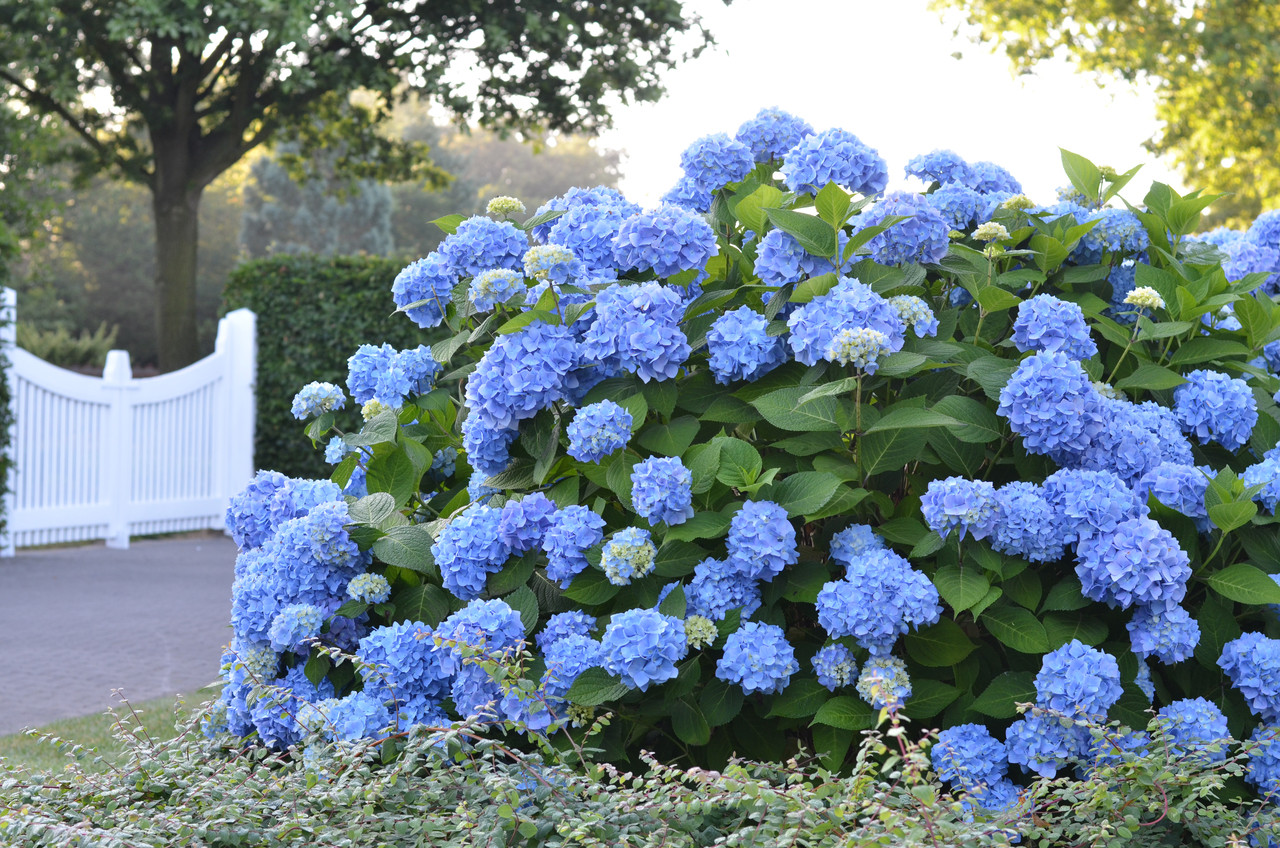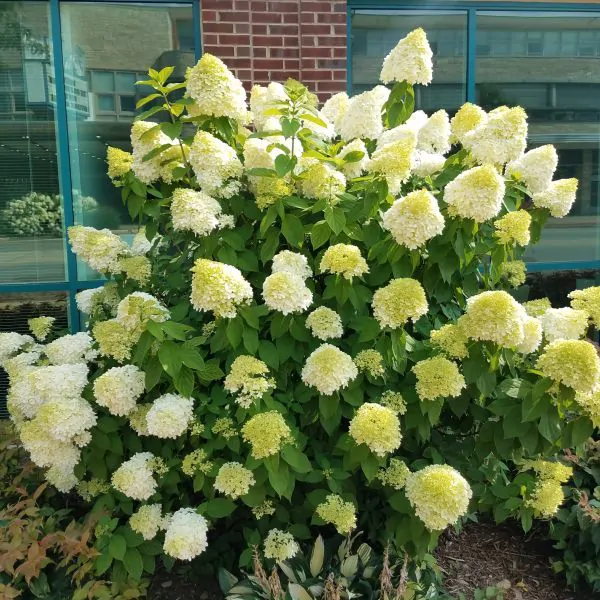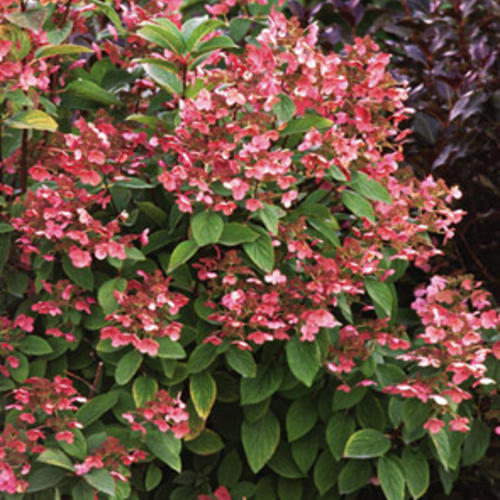Everblooming Hydrangeas: The Ultimate Guide To Growing These Beautiful Flowers
Everblooming hydrangeas are a type of hydrangea that blooms multiple times throughout the growing season. This makes them a popular choice for gardeners who want to enjoy their beautiful flowers for as long as possible.
There are many different varieties of everblooming hydrangeas, each with its own unique characteristics. Some popular varieties include:
- Endless Summer: This variety is known for its long blooming period, which can last from early spring to late fall. The flowers can be pink, blue, or purple, depending on the soil pH.
- Limelight: This variety has large, cone-shaped flowers that are a bright lime green color. It blooms in the summer and fall.
- Little Lime: This variety is a dwarf variety of the Limelight hydrangea. It has smaller flowers, but it is still a very attractive plant.
- French Lace: This variety has delicate, lace-like flowers that are a pale pink color. It blooms in the summer and fall.
- PeeGee: This variety has large, panicle-shaped flowers that are a white or pink color. It blooms in the summer.
No matter what variety you choose, everblooming hydrangeas are relatively easy to care for. They prefer full sun to partial shade and moist, well-drained soil. They should be fertilized in the spring and fall.
To encourage repeat blooming, it is important to prune everblooming hydrangeas in the spring. Pruning should be done before new growth begins. Remove any dead, diseased, or damaged branches. You can also prune to shape the plant.
With proper care, everblooming hydrangeas can add beauty and color to your garden for many years to come.
Main Content
Here are some additional tips for growing everblooming hydrangeas:
- Choose the right location. Everblooming hydrangeas prefer full sun to partial shade. They will tolerate full shade, but they may not bloom as well.
- Prepare the soil. Everblooming hydrangeas prefer moist, well-drained soil. If your soil is sandy or clay, you may need to add organic matter, such as compost or peat moss.
- Fertilize. Everblooming hydrangeas should be fertilized in the spring and fall. Use a balanced fertilizer, such as 10-10-10.
- Water regularly. Everblooming hydrangeas need to be watered regularly, especially during hot, dry weather.
- Prune in the spring. As mentioned earlier, it is important to prune everblooming hydrangeas in the spring. Pruning should be done before new growth begins. Remove any dead, diseased, or damaged branches. You can also prune to shape the plant.
- Protect from pests and diseases. Everblooming hydrangeas are susceptible to a few pests and diseases, such as scale, aphids, and leaf spot. If you see any problems, treat them immediately.
Conclusion
Everblooming hydrangeas are a beautiful and versatile addition to any garden. With proper care, they can provide years of enjoyment.
If you are looking for a hydrangea that blooms multiple times a year, then an everblooming hydrangea is the perfect choice for you. With so many different varieties to choose from, you are sure to find one that will add beauty and color to your garden.
Everblooming hydrangeas are a type of hydrangea that blooms multiple times throughout the season, unlike traditional hydrangeas that only bloom once. This makes them a great choice for gardeners who want to enjoy their beautiful flowers all summer long.
If you're interested in learning more about everblooming hydrangeas, I recommend visiting . This website has a wealth of information on the topic, including:
- Different types of everblooming hydrangeas
- How to choose the right everblooming hydrangea for your climate
- How to plant and care for everblooming hydrangeas
- How to deadhead everblooming hydrangeas
I also recommend visiting the website's blog, which has articles on a variety of hydrangea-related topics.
FAQ of everblooming hydrangea
1. What are everblooming hydrangeas?
Everblooming hydrangeas are a type of hydrangea that blooms more than once in a season. They are typically grown in USDA hardiness zones 4-9 and can be found in a variety of colors, including blue, pink, and purple.
2. Why are everblooming hydrangeas called "everblooming"?
Everblooming hydrangeas are called "everblooming" because they produce two sets of blooms in a single season. The first set of blooms typically appears in early summer, and the second set of blooms appears in late summer or early fall.
3. How do I care for everblooming hydrangeas?
Everblooming hydrangeas are relatively easy to care for. They prefer full sun to partial shade and moist, well-drained soil. They should be fertilized once in the spring and again in the early summer.
4. What are some common problems with everblooming hydrangeas?
Some common problems with everblooming hydrangeas include:
- Leaf spot: Leaf spot is a fungal disease that can cause brown or black spots on the leaves of hydrangeas. To prevent leaf spot, water your hydrangeas at the base of the plant and avoid overhead watering.
- Scale: Scale is an insect pest that can suck the sap from hydrangea leaves. To control scale, spray your hydrangeas with insecticidal soap or neem oil.
- Pests: Hydrangeas can also be susceptible to other pests, such as aphids, spider mites, and whiteflies. To control pests, spray your hydrangeas with insecticidal soap or neem oil.
5. How do I get my everblooming hydrangea to bloom?
There are a few things you can do to encourage your everblooming hydrangea to bloom:
- Plant it in a location that receives full sun to partial shade.
- Water it regularly, especially during the hot summer months.
- Fertilize it once in the spring and again in the early summer.
- Prune it in the late fall or early spring.
Image of everblooming hydrangea
- Endless Summer Hydrangea is a popular variety of everblooming hydrangea that blooms in shades of pink, blue, or white. It is a hardy plant that can tolerate a wide range of climates.

- Limelight Hydrangea is another popular variety of everblooming hydrangea. It blooms in large, cone-shaped clusters of white flowers. It is a relatively fast-growing plant that can reach up to 6 feet tall.

- Little Lime Hydrangea is a dwarf variety of everblooming hydrangea. It blooms in small, lime green flowers. It is a compact plant that only grows to be about 3 feet tall.

- Polaris Hydrangea is a hardy variety of everblooming hydrangea that blooms in shades of blue, pink, or white. It is a relatively large plant that can grow up to 8 feet tall.

- Quick Fire Hydrangea is a fast-growing variety of everblooming hydrangea that blooms in shades of pink, blue, or white. It is a relatively small plant that only grows to be about 3 feet tall.

Post a Comment for "Everblooming Hydrangeas: The Ultimate Guide To Growing These Beautiful Flowers"